Mute Swan
- February 27, 2024
- 0 comment
The Mute Swan (Cygnus olor) is a majestic and iconic waterfowl species known for its elegant beauty and graceful demeanor. With its pristine white plumage, striking orange bill, and long, curved neck, the Mute Swan is a captivating sight on lakes, ponds, and rivers across Europe, Asia, and parts of North America. Despite its name, Mute Swans are not entirely silent; they can produce hissing and grunting sounds, although they lack the trumpeting calls of other swan species. Mute Swans are often found in pairs or small family groups, forming strong pair bonds that can last a lifetime.
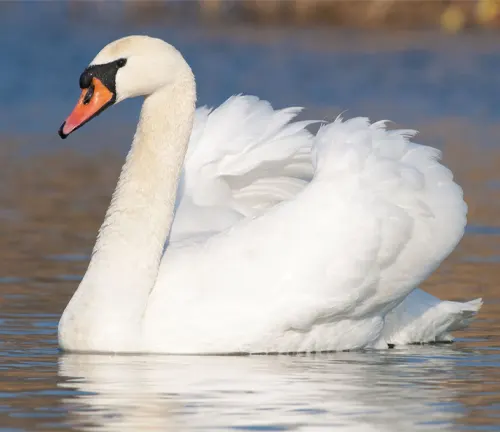
During the breeding season, they build large nests of reeds and grasses near the water’s edge, where females lay a clutch of eggs and both parents participate in incubation and caring for the cygnets. While admired for their beauty and grace, Mute Swans can also display territorial behavior, vigorously defending their nesting sites against intruders. Despite facing threats such as habitat loss and human disturbance, Mute Swans continue to enchant and inspire both nature enthusiasts and artists alike, symbolizing elegance and serenity in the natural world.
| Specifications | Details |
|---|---|
| Scientific Name | Cygnus olor |
| Common Name | Mute Swan |
| Plumage | Pristine white |
| Bill Color | Bright orange |
| Neck | Long and curved |
| Wingspan | 6 to 8 feet |
| Habitat | Lakes, ponds, rivers, marshes |
| Distribution | Europe, Asia, parts of North America |
| Vocalizations | Hissing, grunting |
| Behavior | Territorial, form strong pair bonds |
| Breeding Season | Spring and summer |
| Nest | Large, built of reeds and grasses |
| Clutch Size | 4 to 8 eggs |
| Lifespan | 10 to 20 years (wild), up to 30+ years (captivity) |
| Predators | Few natural predators; eggs and cygnets vulnerable to predation |
| Conservation Status | Not endangered; faces habitat loss and human disturbance |
| Cultural Significance | Symbolizes beauty, elegance, and serenity in the natural world |
Graceful Royalty Among Waterfowl
The Mute Swan (Cygnus olor) is a majestic waterbird that captivates observers with its elegance and grace. Renowned for its distinctive appearance and behavior, the Mute Swan holds a special place in both natural ecosystems and human culture.
Physical Characteristics
Mute Swans are large birds with an impressive wingspan, typically ranging from 6 to 8 feet. They boast a pristine white plumage that contrasts sharply with their bright orange bills. Unlike other swan species, Mute Swans lack the characteristic vocalizations, hence the name “mute.“
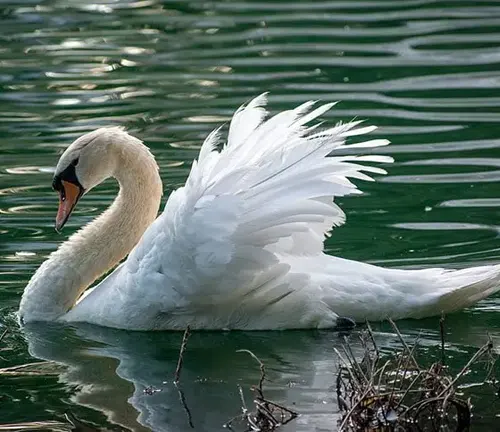

- Plumage: Mute Swans have pristine white plumage covering their entire body, creating a striking contrast against their bright orange bill.
- Bill: Their bill is long, straight, and orange in color, with a distinctive black knob at the base.
- Neck: They have a long and gracefully curved neck, which they often elegantly arch in various postures.
- Size: Mute Swans are large birds, with adults typically measuring between 55 to 63 inches (140 to 160 centimeters) in length.
- Wingspan: They have an impressive wingspan, ranging from 6 to 8 feet (1.8 to 2.4 meters), allowing them to glide effortlessly across bodies of water.
- Weight: Adults can weigh anywhere from 20 to 30 pounds (9 to 14 kilograms), with males generally being larger and heavier than females.
- Feathers: Their feathers are dense and water-resistant, helping them to stay buoyant while swimming.
- Legs and Feet: Mute Swans have long legs that are set far back on their body, enabling them to walk on land and navigate through shallow water. Their feet are webbed, aiding in swimming and propulsion.
- Eyes: They have dark brown eyes, which are often surrounded by a narrow ring of bare skin that varies in color from dark gray to black.
- Sexual Dimorphism: While male and female Mute Swans share similar plumage and physical features, males are typically larger and may have a slightly more pronounced knob on their bill compared to females.
Habitat and Distribution
These swans are native to Europe and Asia but have been introduced to various parts of the world, including North America. They inhabit lakes, ponds, rivers, and marshes, preferring areas with abundant aquatic vegetation for feeding and nesting.
Habitat
Mute Swans are highly adaptable birds that inhabit various types of aquatic environments. They are commonly found in lakes, ponds, rivers, marshes, and estuaries. Mute Swans prefer habitats with calm, shallow waters and abundant aquatic vegetation, which provide them with food sources and nesting sites. They can also be observed in urban parks, reservoirs, and coastal lagoons, displaying their adaptability to human-altered landscapes.
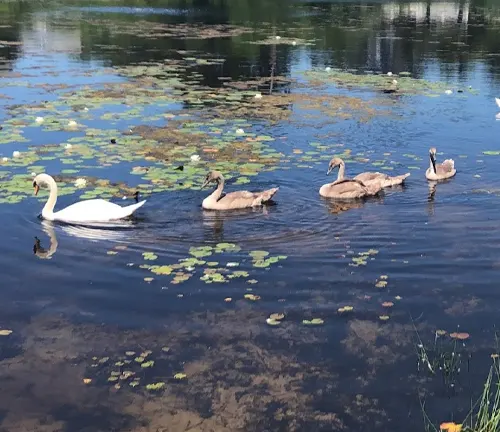

Distribution
Originally native to Europe and Asia, Mute Swans have been introduced to other parts of the world, including North America, Australia, and New Zealand. They have established breeding populations in these regions, often in areas with suitable freshwater habitats. Mute Swans are known for their widespread distribution, with populations thriving in both natural and human-modified environments. However, their distribution may be limited by factors such as climate, habitat availability, and human disturbance.
Behavior and Social Structure
Mute Swans are often seen in pairs or small family groups. They are known for their territorial behavior, vigorously defending their nesting sites against intruders. Despite their serene appearance, Mute Swans can be aggressive, especially during the breeding season.
Behavior
Mute Swans exhibit a range of behaviors that are characteristic of their species. They are known for their graceful movements both on land and in water, gliding effortlessly across bodies of water with their elegant necks outstretched. Mute Swans are diurnal birds, meaning they are active during the day, and they spend much of their time foraging for food, preening their feathers, and engaging in social interactions with other swans.
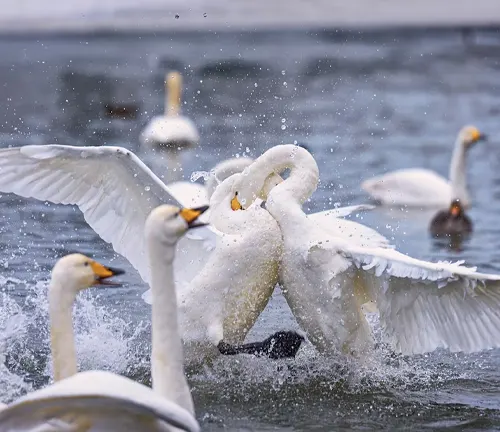
Territoriality
Mute Swans are territorial birds, especially during the breeding season. They vigorously defend their nesting sites and surrounding water bodies from intruders, including other swans and waterfowl species. This territorial behavior is often accompanied by displays of aggression, such as hissing, wing flapping, and charging at perceived threats.
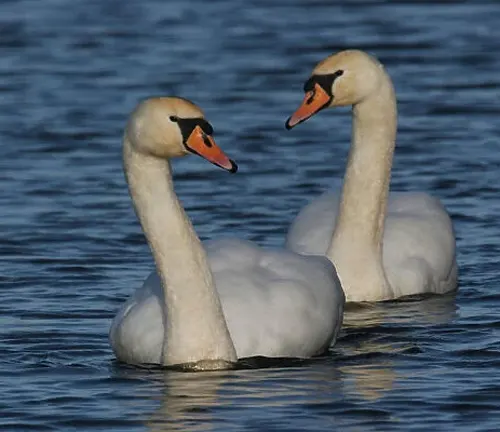
Pair Bonds
Mute Swans form strong pair bonds with their mates, often remaining together for life. During the breeding season, pairs engage in elaborate courtship displays, which may include synchronized swimming, mutual preening, and vocalizations. Once paired, Mute Swans work together to build nests, incubate eggs, and care for their young cygnets.
Social Structure
Mute Swans are typically observed in pairs or small family groups, consisting of an adult pair and their offspring. However, they may also congregate in larger flocks, especially during the non-breeding season or during migration. Within these flocks, individuals may engage in social interactions such as feeding together, vocalizing, and engaging in mutual grooming.
Communication
Mute Swans communicate with each other through a variety of vocalizations, body postures, and visual displays. While they lack the loud trumpeting calls of other swan species, Mute Swans can produce hissing, grunting, and snorting sounds to convey messages such as warning signals or territorial disputes. They also use subtle movements of their necks, heads, and wings to communicate with other swans and interpret their intentions.
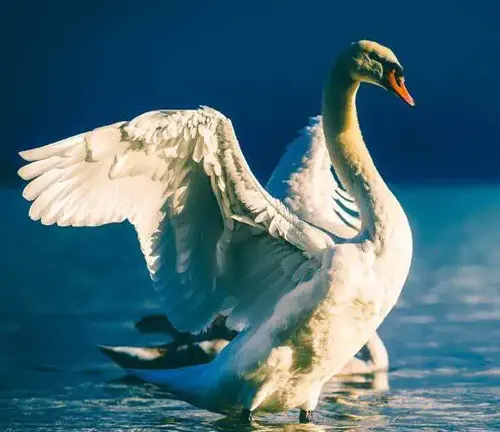
Reproduction and Life Cycle
Breeding usually occurs in the spring and summer months. Mute Swans build large nests made of reeds, grass, and other vegetation near the water’s edge. Females lay a clutch of eggs, typically ranging from 4 to 8 eggs, and both parents participate in incubation and caring for the cygnets.
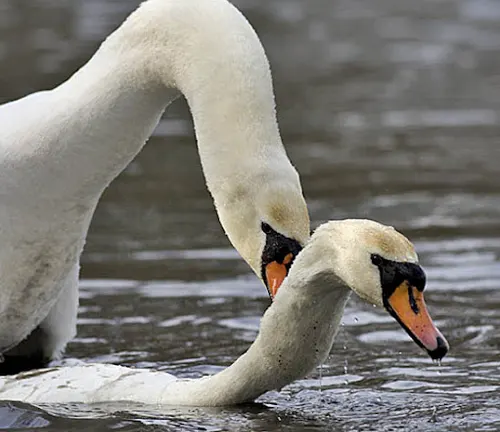
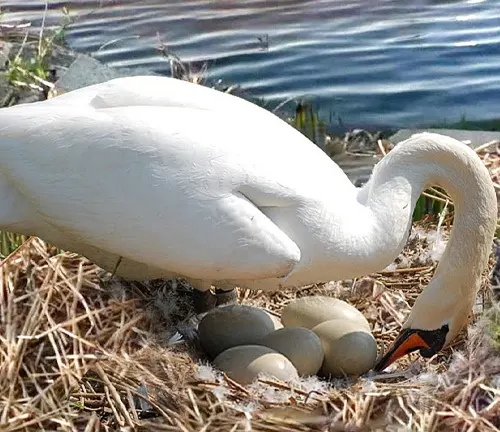
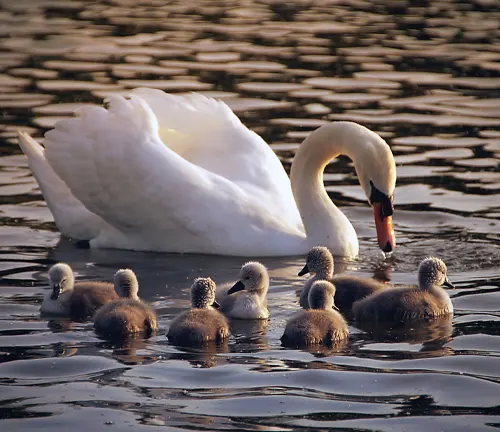
- Breeding Season: Mute Swans typically breed during the spring and summer months, with the exact timing varying depending on geographic location and environmental conditions. Breeding pairs engage in courtship displays to reinforce their pair bonds and prepare for nesting.
- Nest Building: Mute Swans build large nests made of reeds, grasses, and other plant materials in shallow water or on floating vegetation near the water’s edge. The female selects the nest site, while both partners contribute materials to construct the nest. Nests are often situated in secluded areas to provide protection from predators.
- Egg Laying: Once the nest is complete, the female lays a clutch of eggs, typically ranging from 4 to 8 eggs, although clutch sizes can vary. The eggs are pale greenish-gray in color and gradually become stained and discolored as the breeding season progresses.
- Incubation: Both parents participate in incubating the eggs, taking turns to keep the eggs warm and protected from the elements. The incubation period lasts for about 35 to 41 days, during which the parents diligently tend to the eggs, rotating them regularly to ensure even heat distribution.
- Hatching: After the incubation period, the eggs hatch, and the young cygnets emerge from their shells. Newborn cygnets are covered in soft down feathers and are initially dependent on their parents for warmth, protection, and food.
- Parental Care: Mute Swan parents are attentive caregivers, providing constant care and protection to their offspring. They lead their cygnets to suitable foraging areas, teaching them how to find food and navigate their environment. Both parents actively defend the cygnets from predators and other threats.
- Growth and Development: As the cygnets grow, they undergo rapid development, gradually replacing their down feathers with juvenile plumage. They become increasingly independent, learning essential survival skills from their parents and exploring their surroundings under their watchful guidance.
- Fledging: After several weeks, the cygnets reach a stage where they are ready to leave the nest and venture out on their own. This period, known as fledging, marks the beginning of their journey to adulthood. Fledged cygnets may remain with their parents for some time, continuing to learn valuable life skills before eventually dispersing to establish their own territories and breeding pairs.
- Life Span: Mute Swans have a relatively long life span, with individuals typically living for around 10 to 20 years in the wild. However, they can live even longer in captivity, with some individuals reaching 30 years or more with proper care and management.
Diet and Feeding Habits
Their diet primarily consists of aquatic plants, algae, and small invertebrates. Mute Swans are opportunistic feeders, foraging by grazing on submerged vegetation or dabbling at the water’s surface.
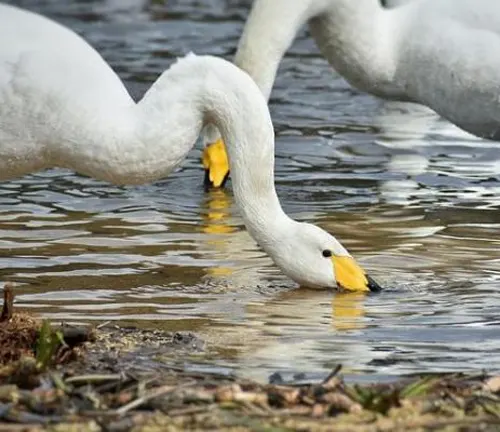
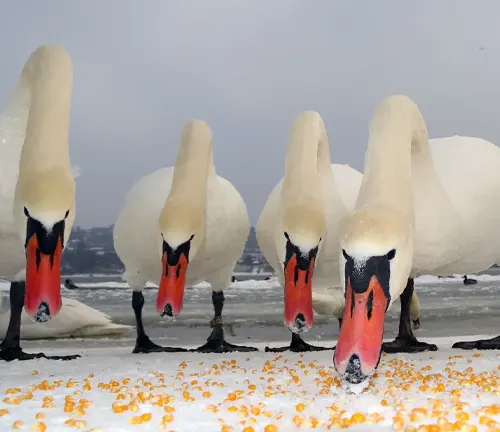
- Herbivorous Diet: Mute Swans are primarily herbivores, meaning they mainly consume plant matter. Their diet consists primarily of aquatic vegetation, including submerged plants, algae, and aquatic grasses. They use their long necks to reach underwater vegetation while foraging.
- Opportunistic Feeding: While Mute Swans predominantly feed on aquatic plants, they are opportunistic feeders and may also consume small invertebrates, insects, and mollusks found in their habitat. They may supplement their diet with animal matter when plant food sources are scarce or unavailable.
- Foraging Behavior: Mute Swans employ various foraging techniques to obtain food. They can be observed grazing on submerged vegetation at the bottom of bodies of water, dabbling at the water’s surface to pluck floating vegetation, or upending to reach submerged plants. They may also forage on land, grazing on grasses and other vegetation near the water’s edge.
Interactions with Humans
While admired for their beauty, Mute Swans can sometimes be viewed as pests due to their territorial nature and potential impact on aquatic ecosystems. They may also pose hazards to aviation and agriculture.

Conservation Status
Despite their widespread distribution, Mute Swans face threats such as habitat loss, pollution, and human disturbance. Conservation efforts aim to mitigate these challenges and ensure the long-term survival of populations.
Interesting Facts about Mute Swans
- Mute Swans are one of the heaviest flying birds, weighing up to 30 pounds.
- They mate for life, forming strong bonds with their partners.
- Despite being called “mute,” Mute Swans are capable of making hissing and grunting sounds.
Different Species
Trumpeter Swan
(Cygnus buccinator)
Native to North America, the Trumpeter Swan is the largest native waterfowl species on the continent. It’s named for its loud, trumpet-like call.
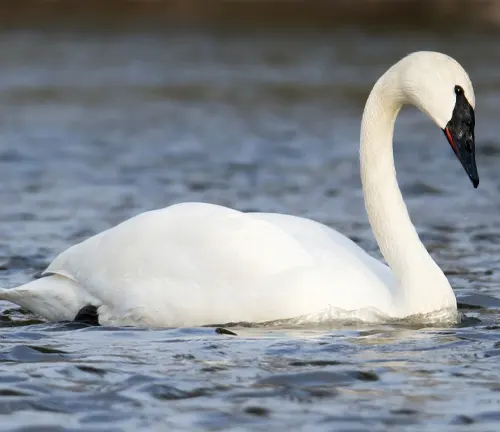

Tundra Swan
(Cygnus columbianus)
Also known as the Whistling Swan, this species breeds in the Arctic tundra and migrates south for the winter. It’s recognized by its high-pitched, musical call.
Whooper Swan
(Cygnus cygnus)
Found in Eurasia, the Whooper Swan is known for its distinctive whooping call. It breeds in northern Europe and Asia and migrates south for the winter.
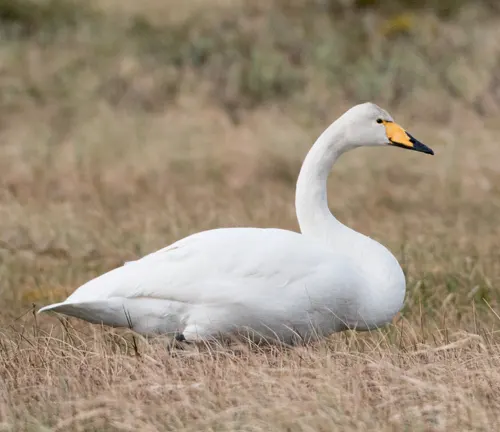
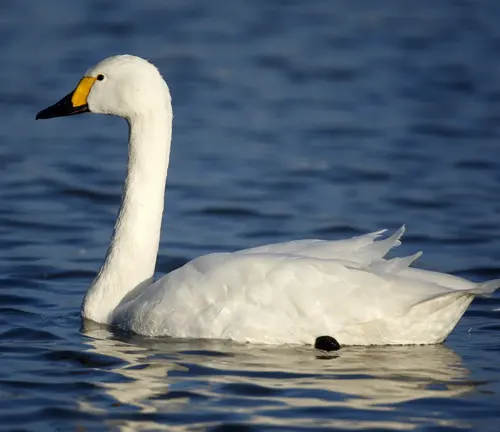
Bewick’s Swan
(Cygnus bewickii)
Similar in appearance to the Tundra Swan, Bewick’s Swan breeds in the Arctic and winters in Europe and Asia. It’s named after the English engraver Thomas Bewick.
Black Swan
(Cygnus atratus)
Native to Australia, the Black Swan is known for its striking black plumage with a bright red bill. It’s the official bird emblem of Western Australia.
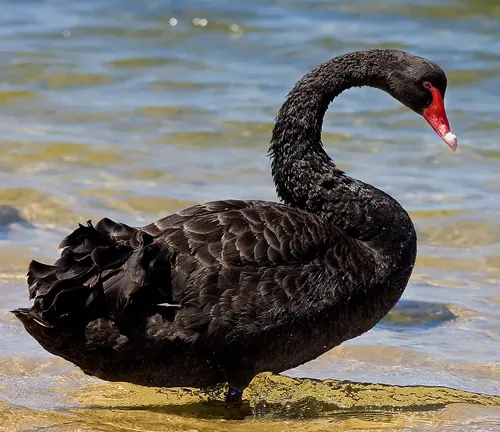
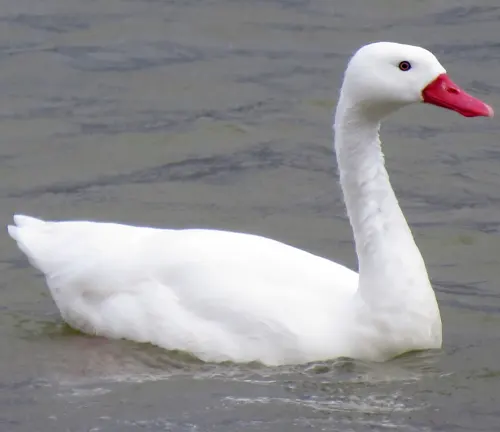
Coscoroba Swan
(Coscoroba coscoroba)
Though not technically a member of the Cygnus genus, the Coscoroba Swan is often grouped with swans due to its appearance and behavior. It’s native to South America and is the smallest of the swan species.
Frequently Asked Questions (FAQs)
- What do Mute Swans look like?
Mute Swans are large birds with a pristine white plumage, bright orange bills, and long necks. They have a distinctive S-shaped neck posture and are often seen gliding gracefully across bodies of water. - Where do Mute Swans live?
Mute Swans are native to Europe and Asia but have been introduced to various parts of the world, including North America. They inhabit lakes, ponds, rivers, and marshes, preferring areas with abundant aquatic vegetation. - How long do Mute Swans live?
Mute Swans have a relatively long lifespan, typically living for around 10 to 20 years in the wild. However, they can live even longer in captivity, with some individuals reaching 30 years or more. - Do Mute Swans migrate?
While some Mute Swan populations are sedentary and remain in their breeding areas year-round, others undertake seasonal migrations in response to changing environmental conditions, such as food availability and weather patterns. - What do Mute Swans eat?
Mute Swans are primarily herbivorous, feeding on aquatic plants, algae, and submerged vegetation. They may also consume small invertebrates, insects, and mollusks found in their habitat. - How do Mute Swans communicate?
Mute Swans communicate through a variety of visual displays, postures, and vocalizations. While they lack the trumpeting calls of other swan species, they can produce hissing, grunting, and snorting sounds to communicate with each other. - Do Mute Swans mate for life?
Yes, Mute Swans are known for forming strong pair bonds that often last for life. Once paired, they engage in mutual courtship behaviors, such as synchronized swimming and vocalizations. - How many eggs do Mute Swans lay?
Female Mute Swans typically lay a clutch of 4 to 8 eggs, with an average of around 6 eggs per nest. Both parents participate in incubating the eggs and caring for the young cygnets after they hatch. - Do Mute Swans have predators?
While adult Mute Swans have few natural predators due to their large size and defensive behavior, their eggs and young cygnets are vulnerable to predation by various animals, including foxes, raccoons, and birds of prey. - Can Mute Swans be kept as pets?
In some regions, Mute Swans are kept in captivity for ornamental purposes in parks, estates, and private ponds. However, they require specialized care and permits due to their size, habitat requirements, and potential aggression.


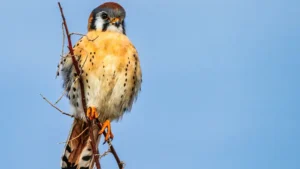
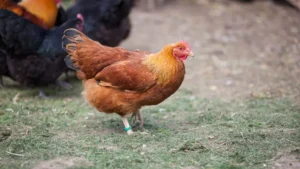

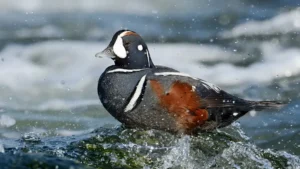


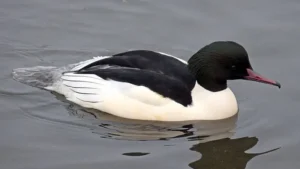
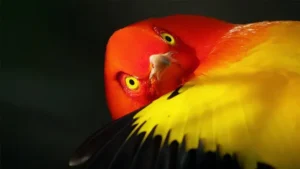
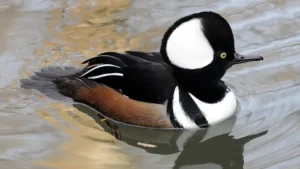
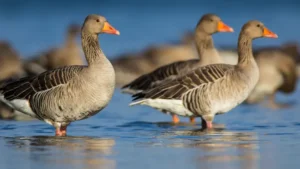
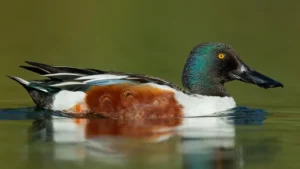
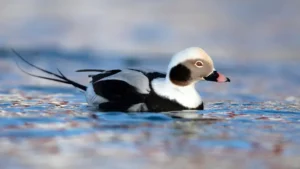
Leave your comment